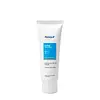What's inside
What's inside
 Key Ingredients
Key Ingredients

 Benefits
Benefits

 Concerns
Concerns

No concerns
 Ingredients Side-by-side
Ingredients Side-by-side

Water
Skin ConditioningCoco-Caprylate/Caprate
EmollientDisodium Acetyl Glucosamine Phosphate
Skin ConditioningC13-15 Alkane
SolventNeopentyl Glycol Diheptanoate
EmollientGlycerin
HumectantDiisopropyl Sebacate
EmollientMethylene Bis-Benzotriazolyl Tetramethylbutylphenol
UV FilterXylitylglucoside
HumectantDiethylhexyl Butamido Triazone
UV AbsorberC20-22 Alkyl Phosphate
EmulsifyingCaprylhydroxamic Acid
Dimethicone
EmollientBis-Ethylhexyloxyphenol Methoxyphenyl Triazine
Skin ConditioningHydroxyethyl Acrylate/Sodium Acryloyldimethyl Taurate Copolymer
Emulsion StabilisingButylene Glycol
HumectantPrunus Yedoensis Leaf Extract
Skin ConditioningHydrogenated Rapeseed Oil
EmollientCaprylyl/Capryl Glucoside
CleansingAcacia Senegal Gum
MaskingPolyacrylate Crosspolymer-6
Emulsion StabilisingTrisodium Ethylenediamine Disuccinate
Arachidyl/Behenyl Alcohol
EmulsifyingXanthan Gum
EmulsifyingSodium Hydroxide
BufferingWater, Coco-Caprylate/Caprate, Disodium Acetyl Glucosamine Phosphate, C13-15 Alkane, Neopentyl Glycol Diheptanoate, Glycerin, Diisopropyl Sebacate, Methylene Bis-Benzotriazolyl Tetramethylbutylphenol, Xylitylglucoside, Diethylhexyl Butamido Triazone, C20-22 Alkyl Phosphate, Caprylhydroxamic Acid, Dimethicone, Bis-Ethylhexyloxyphenol Methoxyphenyl Triazine, Hydroxyethyl Acrylate/Sodium Acryloyldimethyl Taurate Copolymer, Butylene Glycol, Prunus Yedoensis Leaf Extract, Hydrogenated Rapeseed Oil, Caprylyl/Capryl Glucoside, Acacia Senegal Gum, Polyacrylate Crosspolymer-6, Trisodium Ethylenediamine Disuccinate, Arachidyl/Behenyl Alcohol, Xanthan Gum, Sodium Hydroxide
Water
Skin ConditioningEthylhexyl Methoxycinnamate
UV AbsorberButyl Methoxydibenzoylmethane
UV AbsorberBenzophenone-3
UV AbsorberPhospholipids
Skin ConditioningButylene Glycol
HumectantGlycerin
HumectantZea Mays Starch
AbsorbentC12-15 Alkyl Benzoate
AntimicrobialTitanium Dioxide
Cosmetic ColorantSilica
AbrasiveDimethicone
EmollientAloe Barbadensis Leaf Juice
Skin ConditioningEthylhexyl Palmitate
EmollientIsopropyl Myristate
EmollientCitrullus Lanatus Fruit Extract
Skin ConditioningAcrylates/C10-30 Alkyl Acrylate Crosspolymer
Emulsion StabilisingSorbitan Stearate
EmulsifyingSucrose Cocoate
EmulsifyingSodium Lactate
BufferingGlyceryl Stearate
EmollientPEG-100 Stearate
Betaine
HumectantFructooligosaccharides
HumectantBeta Vulgaris Root Extract
Skin ConditioningTocopheryl Acetate
AntioxidantMenthyl Lactate
MaskingOxothiazolidine
Skin ProtectingPhenoxyethanol
PreservativeSodium Benzoate
MaskingSodium Hydroxide
BufferingSodium Gluconate
Skin ConditioningSodium Hyaluronate
HumectantWater, Ethylhexyl Methoxycinnamate, Butyl Methoxydibenzoylmethane, Benzophenone-3, Phospholipids, Butylene Glycol, Glycerin, Zea Mays Starch, C12-15 Alkyl Benzoate, Titanium Dioxide, Silica, Dimethicone, Aloe Barbadensis Leaf Juice, Ethylhexyl Palmitate, Isopropyl Myristate, Citrullus Lanatus Fruit Extract, Acrylates/C10-30 Alkyl Acrylate Crosspolymer, Sorbitan Stearate, Sucrose Cocoate, Sodium Lactate, Glyceryl Stearate, PEG-100 Stearate, Betaine, Fructooligosaccharides, Beta Vulgaris Root Extract, Tocopheryl Acetate, Menthyl Lactate, Oxothiazolidine, Phenoxyethanol, Sodium Benzoate, Sodium Hydroxide, Sodium Gluconate, Sodium Hyaluronate
Ingredients Explained
These ingredients are found in both products.
Ingredients higher up in an ingredient list are typically present in a larger amount.
Butylene Glycol (or BG) is used within cosmetic products for a few different reasons:
Overall, Butylene Glycol is a safe and well-rounded ingredient that works well with other ingredients.
Though this ingredient works well with most skin types, some people with sensitive skin may experience a reaction such as allergic rashes, closed comedones, or itchiness.
Learn more about Butylene GlycolDimethicone is a type of synthetic silicone created from natural materials such as quartz.
What it does:
Dimethicone comes in different viscosities:
Depending on the viscosity, dimethicone has different properties.
Ingredients lists don't always show which type is used, so we recommend reaching out to the brand if you have questions about the viscosity.
This ingredient is unlikely to cause irritation because it does not get absorbed into skin. However, people with silicone allergies should be careful about using this ingredient.
Note: Dimethicone may contribute to pilling. This is because it is not oil or water soluble, so pilling may occur when layered with products. When mixed with heavy oils in a formula, the outcome is also quite greasy.
Learn more about DimethiconeGlycerin is already naturally found in your skin. It helps moisturize and protect your skin.
A study from 2016 found glycerin to be more effective as a humectant than AHAs and hyaluronic acid.
As a humectant, it helps the skin stay hydrated by pulling moisture to your skin. The low molecular weight of glycerin allows it to pull moisture into the deeper layers of your skin.
Hydrated skin improves your skin barrier; Your skin barrier helps protect against irritants and bacteria.
Glycerin has also been found to have antimicrobial and antiviral properties. Due to these properties, glycerin is often used in wound and burn treatments.
In cosmetics, glycerin is usually derived from plants such as soybean or palm. However, it can also be sourced from animals, such as tallow or animal fat.
This ingredient is organic, colorless, odorless, and non-toxic.
Glycerin is the name for this ingredient in American English. British English uses Glycerol/Glycerine.
Learn more about GlycerinSodium Hydroxide is also known as lye or caustic soda. It is used to adjust the pH of products; many ingredients require a specific pH to be effective.
In small amounts, sodium hydroxide is considered safe to use. However, large amounts may cause chemical burns due to its high alkaline.
Your skin has a natural pH and acid mantle. This acid mantle helps prevent harmful bacteria from breaking through. The acid mantle also helps keep your skin hydrated.
"Alkaline" refers to a high pH level. A low pH level would be considered acidic.
Learn more about Sodium HydroxideWater. It's the most common cosmetic ingredient of all. You'll usually see it at the top of ingredient lists, meaning that it makes up the largest part of the product.
So why is it so popular? Water most often acts as a solvent - this means that it helps dissolve other ingredients into the formulation.
You'll also recognize water as that liquid we all need to stay alive. If you see this, drink a glass of water. Stay hydrated!
Learn more about Water